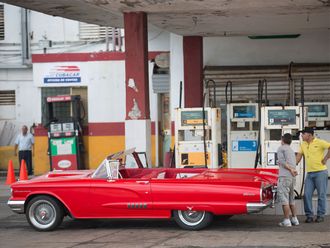Over the last few months, visits to Doha have become more and more interesting. Gone is the sleepy small town atmosphere; instead one is welcomed by the bustle of a fast-growing city, including ubiquitous traffic jams on any road at any time of the day.
There is the large, new museum coming up on the Corniche. And of course, you can now see some stadium constructions.
On the retail front, the boom town feeling is inescapable. Large regional shopping malls are opening fast. The Ezdaan Mall is still finding its feet, but Al Tawar Mall, The Gulf Mall, Highgate Mall, Doha Festival City, Qatar Mall, Mall of Doha and Merqab Mall are all lined up for opening within the next one to four years adding over 10 million square feet of high quality retail shopping space.
These are just the ones visible today, not including others still on the drawing board. With a couple of exceptions, most developers seem to be aiming for a similar clientele — the mid- to upper-segment.
Demographic shift
In terms of demographic shift, only the Lulu Group is going to outlying locations, building malls in unserved areas which cater to a lower-income demographic shopper. They have one such already running successfully, Al Khor Mall, and will soon open another in the satellite town of Al Warka.
Many leasing managers seem to be taking the easy solution, depending on three to four large retail operators to fill up the majority of the space — and then maybe worry about the 10-20 per cent space for new or smaller operators. That some of the malls are owned by retail operators themselves also helps to fill up the real estate, though this is not necessarily great for the mix.
What is also perhaps a little surprising is that many are coming up within a 5-8 kilometre radius.
Surge of new space
With this surge of new space, one would expect existing malls to be feverishly working to re-invent themselves. Evidently, existing laws and the way wheels turn in Doha make it quite difficult to change a non-performing tenant if he does not wish to leave.
Because space availability currently is so tight, even increasing rental renewal rates dramatically fails to dislodge them. As a result, existing operators sit comfortably on high demand properties seemingly oblivious of the Black Swan lurking in the background. In the next few years, many of them may become irrelevant with customers flocking to spanking new properties.
Qatar is currently served by 650,000 square metres of mall retail space across 14 properties. With a population of 2.05 million, with 23.5 per cent being women, one could assume that these malls cater to a demographic of around 1-1.2 million people.
With an additional 1 million plus square metres in supply in the next three to four years, the population would have to grow substantially to be able to absorb the space. Tourism could be a solution. In 2012, around 2.3 million tourists arrived in Doha, up 10 per cent over 2012.
Over one million came from the GCC, gaining 13 percent over 2012. It would be interesting to understand how many of them came on business. For tourism to grow, a lot of attractions will be needed.
For now though there is little vacant space immediately available and retailers are piling into the city in search of locations. So while existing players are cruising, new developers are having a great time picking.
— The writer is the CEO of Tridayle Consult.












